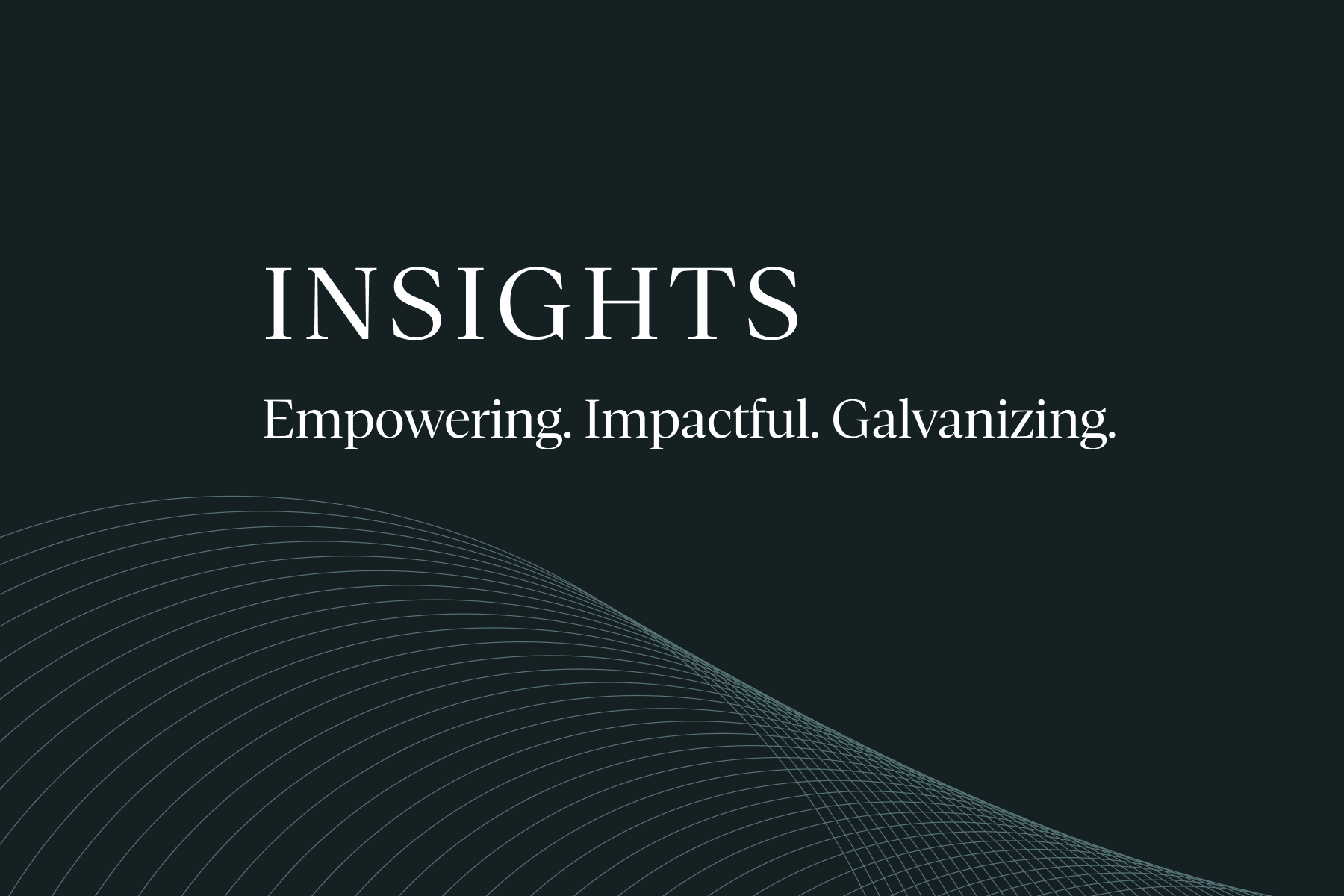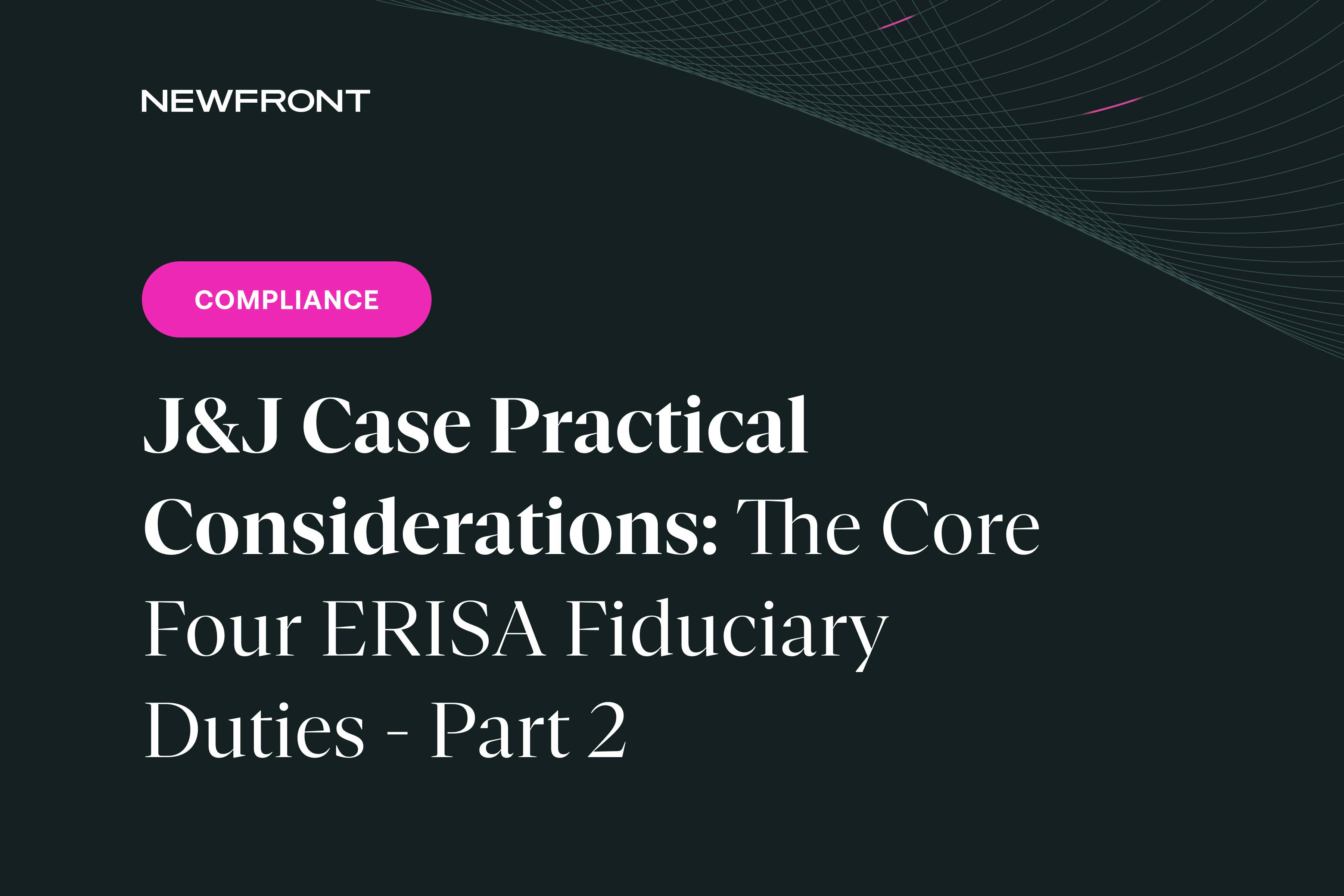Key Decision Points in ACA Reporting Vendor Setup Questionnaires: Part II
By Brian Gilmore | Published September 11, 2020
Question: How should employers approach the basic ACA reporting questions in the setup forms used by most payroll or benefits administration systems?
Short Answer: The three key inputs are the measurement method, affordability safe harbor, and—for those employers utilizing the look-back measurement method—the measurement and stability periods.
Note: This is the second post in a four-part series addressing ACA reporting vendor setup questions.
General Rule: ACA Reporting
The ACA requires Applicable Large Employers (ALEs) subject to the ACA employer mandate to report whether they offered medical coverage (i.e., minimum essential coverage) that was affordable and provided minimum value to full-time employees. This reporting is generally handled via IRS Forms 1094-C/1095-C.
Although Congress effectively repealed the ACA individual mandate in the Tax Cuts and Jobs Act by zeroing out the tax penalty as of 2019, employers with a self-insured plan (and insurance carriers for a fully insured plan) are still required to report the months of coverage for the employee and any covered dependents. Self-insured ALEs report this coverage information—despite it no longer having any federal income tax consequence—in Part III of the Form 1095-C. Insurance carriers for fully insured plans report this coverage information on a separate Form 1095-B.
For more details from an employer perspective:
Newfront ACA Employer Mandate Pay or Play and ACA Reporting Guide
Newfront Compliance Alert: ACA Reporting Deadlines Extended Again
For more details from an employee perspective:
Newfront ACA Reporting Infographic for Employees: Fully Insured
Newfront ACA Reporting Infographic for Employees: Self-Insured
Newfront ACA Reporting Infographic for Employees: Fully Insured and Self-Insured
Key Decision Point #2: Affordability Safe Harbor
The ACA affordability test is based on the employee-share of the premium for employee-only coverage under the ALE’s lowest cost plan option (that provides minimum value) in which the employee is eligible to enroll. In other words, employers look to the lowest possible amount that the full-time employee could pay to enroll in the employer’s major medical plan.
Employers that offer different medical plan options to different groups of employees will need to look to the lowest cost plan option available to each group to determine affordability for each employee. This issue most commonly arises for employers with different regional coverage offerings. For example, the lowest cost plan option may be a regional HMO in California that is not available to employees in certain other states. In that situation, the affordability analysis for employees in the other states (who are not eligible for the CA regional HMO) is based on the lowest cost plan option available to those employees.
The affordability test technically looks to whether that lowest possible employee contribution is within 9.5% (indexed for inflation, up to 9.83% in 2021) of the employee’s household income. However, the IRS recognizes that employers generally do not know the employee’s household income.
Therefore, the IRS provides three safe harbors for ALEs to determine whether an offer of coverage is affordable for purposes of avoiding B Penalty liability:
Federal Poverty Line Affordability Safe Harbor
Rate of Pay Affordability Safe Harbor
Form W-2 Affordability Safe Harbor
If an ALE’s offer meets any of these safe harbors, the offer of coverage is deemed affordable for B Penalty purposes—regardless of whether the employee may qualify for Exchange subsidies based on the employee’s actual income and number of household members.
The affordability status of an offer is not affected by an employee electing to enroll in coverage other than the lowest possible employee contribution amount. For example, if an employee chooses the highest-cost family plan coverage option, the offer’s affordability status is still determined by reference to the lowest cost employee-only coverage option that was available to the full-time employee.
May an ALE Use More than One Affordability Safe Harbor?
Yes, the ALE may choose different safe harbors for any reasonable category of employees. However, the caveat is that the ALE must apply each safe harbor on a uniform and consistent basis for all employees in each category.
The IRS states that reasonable categories include specified job categories, nature of compensation (such as salaried or hourly), geographic location, and similar bona fide business criteria. Listing employees specifically by name (or other categories having the same effect) is not considered a reasonable category.
Which Affordability Safe Harbor Should ALEs Use?
This is generally a straightforward analysis for most employers:
The monthly employee-share of the premium for the lowest-cost major medical plan option at the employee-only tier does not exceed 0$104.52/month (2021): USE THE FEDERAL POVERTY LINE AFFORDABILITY SAFE HARBOR
The monthly employee-share of the premium for the lowest-cost major medical plan option at the employee-only tier exceeds $104.52/month (2021): USE THE RATE OF PAY AFFORDABILITY SAFE HARBOR
For more details, see our Compliance Alert: How the ACA Affordability Increase to 9.83% Affects Employers.
Employers should always use the federal poverty line affordability safe harbor where available because it a) results in coverage automatically being deemed affordable with no calculations necessary, and b) permits employers to take advantage of streamlined ACA reporting via the Qualifying Offer Method. For more details on the Qualifying Offer Method, see our previous post: Streamlined ACA Reporting Methods.
Where the Cheapest Plan Exceeds $104.52 (2021): Use the Rate of Pay Affordability Safe Harbor
In most cases, employers that do not meet the federal poverty line affordability safe harbor (i.e., employees’ monthly lowest cost plan exceeds 04.52/month (2021)) will want to utilize the rate of pay affordability safe harbor.
The rate of pay affordability safe harbor applies the applicable affordability percentage based on two separate tests—one for hourly full-time employees, and one for salaried full-time employees:
Hourly Full-Time Employees
Test: 9.83% (2021) of the employee’s hourly rate of pay as of the first day of the coverage period x 130 hours
Note: The hourly rate of pay is multiplied by 130 regardless of actual hours of service performed. The IRS uses 130 hours of service in a calendar month as a proxy for the 30 hours of service/week full-time status definition in §4980H.
Example:
Widget Co.’s lowest paid full-time hourly employees are paid at a rate of $12/hour for each calendar month in 2021
130 hours of service x $12/hour = $1,560 assumed monthly income
Full-time employee monthly contribution rate for lowest-cost, employee-only coverage cannot exceed 9.83% (2021) of $1,560
$1,560 0.0983 = $153.34/month maximum
Salaried Full-Time Employees
Test: 9.83% (2021) of the employee’s monthly salary as of the first day of the coverage period
Note: Special rules apply if the employee’s hourly rate or monthly salary is reduced.
Example:
Widget Co.’s lowest paid full-time salaried employees are paid a salary of $36,000 in 2021
$36,000 / 12 = $3,000 monthly salary
Full-time employee monthly contribution rate for lowest-cost, employee-only coverage cannot exceed 9.83% (2021) of $3,000
$3,000 x .0983 = $294.90/month maximum
An ALE will meet the rate of pay affordability safe harbor for all full-time employees if the employee-share of the premium for the lowest-cost plan at the employee-only tier does not exceed these monthly maximum thresholds.
In the examples above, Widget Co.’s plan would be affordable for all full-time employees (hourly and salaried) if the lowest possible amount that an employee could pay to enroll in the employer’s major medical plan does not exceed $153.34/month.
Why the Form W-2 Affordability Safe Harbor is Generally Not Recommended
The Form W-2 affordability safe harbor provides that coverage is affordable if the employee-share of the premium for the lowest cost plan option at the employee-only tier does not exceed 9.83% (2021) of the employee’s Box 1 wages on the Form W-2.
This approach has several disadvantages:
Disadvantage #1: The Form W-2 affordability safe harbor provides little predictability because employees’ Box 1 wages are unknown until January of the following year. For example, an ALE would not know until January of 2022 whether it met the Form W-2 affordability safe harbor for any full-time employee in 2021.
Disadvantage #2: Box 1 of the Form W-2 does not include many common forms of compensation, including 401(k)/403(b)/457(b) employee deferrals and Section 125 salary reductions for health and welfare plan coverage and FSA/HSA contributions. This can result in a significantly reduced Box 1 amount, and a deceptively lower amount than the ALE’s expectation based on standard annualized compensation information.
Disadvantage #3: The employee-share of the premium must remain consistent as an amount or percentage for the full plan year. This means that employers cannot make mid-year adjustments to address lower-than-anticipated Box 1 amounts.
In short, the Form W-2 affordability safe harbor is probably well suited only for employers that impose an employee contribution amount based on a fixed percentage of Form W-2 wages throughout the year. However, most ALEs do not structure contribution tiers in this manner—thereby limiting the Form W-2 affordability safe harbor as a viable contender to only a select few employers.
Reminder: Special Rules Apply for Opt-Out Credits and Flex Credits
There are special ACA affordability rules to determine how to account for any opt-out credit or flex credit structure offer by the employer. These rules are not intuitive and can have a significant effect on the affordability calculation.
For more details, see our Compliance Alert: How the ACA Affordability Increase to 9.83% Affects Employers.

Brian Gilmore
Lead Benefits Counsel, VP, Newfront
Brian Gilmore is the Lead Benefits Counsel at Newfront. He assists clients on a wide variety of employee benefits compliance issues. The primary areas of his practice include ERISA, ACA, COBRA, HIPAA, Section 125 Cafeteria Plans, and 401(k) plans. Brian also presents regularly at trade events and in webinars on current hot topics in employee benefits law.
Connect on LinkedIn

